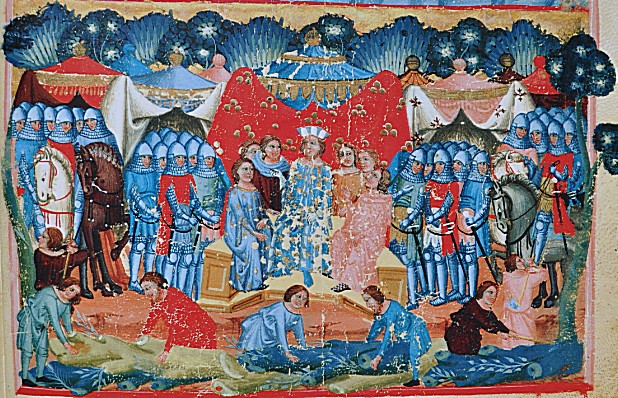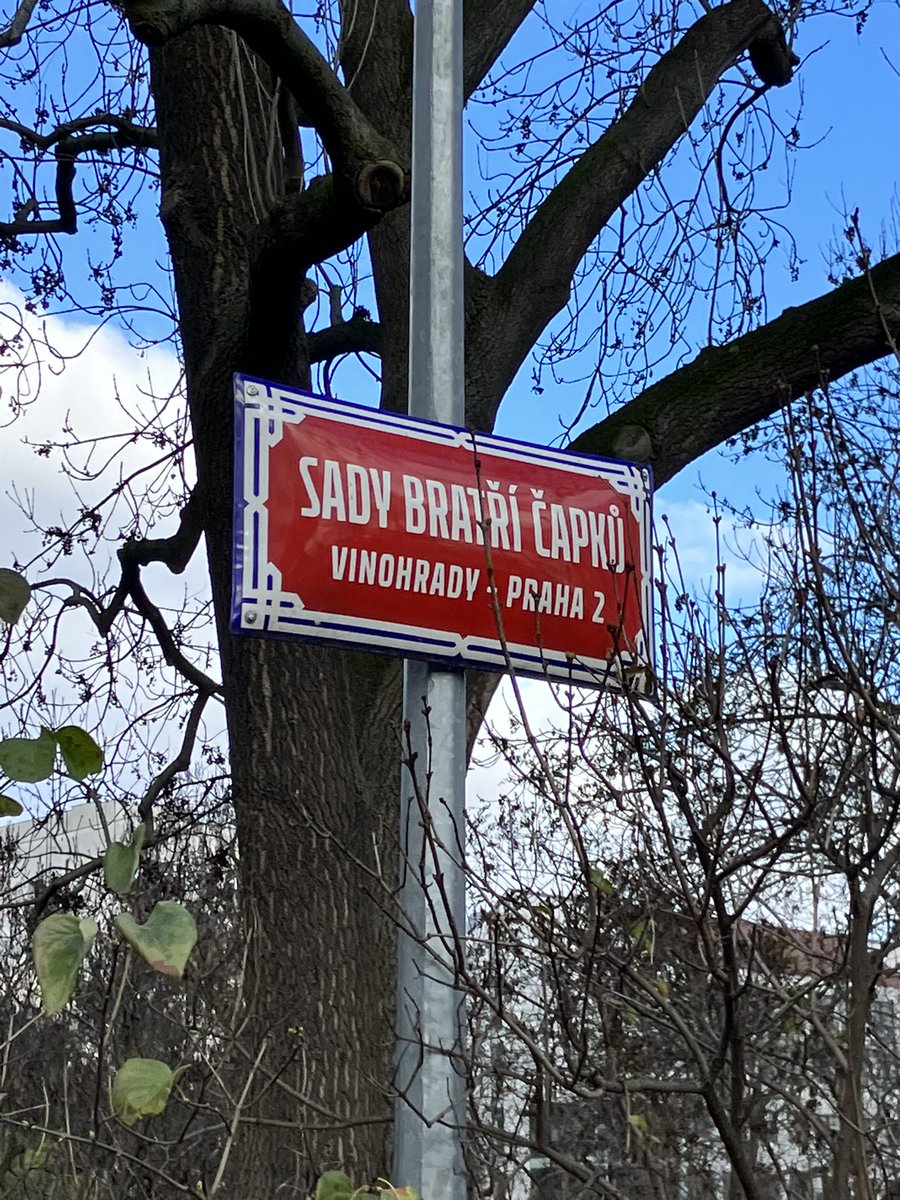
2) Until 1926, this was Kollárova, after Ján Kollár (1793-1852), Slovak poet, archaeologist, politician and renowned Pan-Slavist. 

3) Varšava is obviously Warsaw, which is obviously the capital of Poland, which obviously got a lot of coverage on
And a bit more coverage on
https://twitter.com/ed__ley/status/1594243765144895488.
And a bit more coverage on
https://twitter.com/ed__ley/status/1595666886175465473and
https://twitter.com/ed__ley/status/1597483340478951426.
4) So let’s have some Christmas Day fun with some Czech-Polish false friends.
I’ve left out the one that everybody already knows because the is a family-friendly day.
I’ve left out the one that everybody already knows because the is a family-friendly day.
5) If something in Czech is bezcenný, it’s worthless.
In Polish, something that’s bezcenny is the opposite, priceless (Czech: neocenitelný).
In Polish, something that’s bezcenny is the opposite, priceless (Czech: neocenitelný).
6) Go the shops in Poland and ask for burak, and you’ll get beetroot.
Ask for the same thing in the Czech Republic and you’ll get a single peanut.
Ask for the same thing in the Czech Republic and you’ll get a single peanut.
7) Bydlo in Czech is a dwelling; bydło in Polish is somewhat harder to live in, what with being cattle.
Cattle are dobytek in Czech… which, in Polish, can be used to mean ‘possessions’ in a non-cow sense.
Cattle are dobytek in Czech… which, in Polish, can be used to mean ‘possessions’ in a non-cow sense.
8) Czechs like their food to be čerstvý, i.e. fresh.
Give a Pole food that’s czerstwy and they’ll never speak to you again, as czerstwy means ‘stale’.
Give a Pole food that’s czerstwy and they’ll never speak to you again, as czerstwy means ‘stale’.
9) In the month corner, kwiecień starts in Poland a whole month before květěn starts in the Czech Republic.
The same is true of czerwiec and červenec.
The same is true of czerwiec and červenec.
10) If a Pole gives you a długopis, that’s a pen, and you don’t necessarily have to give it back to them.
If a Czech gives you a dluhopis, that’s a bond, so the Czech is probably expecting to get repayment at some point.
If a Czech gives you a dluhopis, that’s a bond, so the Czech is probably expecting to get repayment at some point.
11) In Czech, a doba is an undetermined time period; in Polish, that’s very much a determined time period, namely of 24 hours.
12) If you use the Czech word ‘chyba’ in Polish to mean mistake, then that’s… a mistake. ‘Chyba’ means ‘maybe’ or ‘I guess’, i.e. it’s Polish for ‘asi’.
13) If you ever find yourself doing an online shop in Poland, please remember that a ‘jagoda’ is a blueberry not a strawberry (Czech ‘jahoda’).
14) In Czech, sitting on a ‘stolec’ - a throne - may make you feel quite nice.
In Polish, sitting on a ‘stolec’ probably won’t, as… well, add an extra o and remove the e and the c, and you might get what I’m talking about.
In Polish, sitting on a ‘stolec’ probably won’t, as… well, add an extra o and remove the e and the c, and you might get what I’m talking about.
15) Conversely, it’s fine to sit on a ‘lawa’ - a bench - in Poland, but sitting on láva in the Czech Republic will probably burn you to death.
16) A Czech ‘statek’ is a farm. A Polish ‘statek’ is a ship. There’s probably a joke about Łódź in here somewhere.
17) You’ll see the word ‘kantor’ all over any Polish city you visit. They’re a great place to exchange money.
A Czech ‘kantor’ may be able to exchange money with you, but legally he probably shouldn’t. He’s a schoolmaster.
A Czech ‘kantor’ may be able to exchange money with you, but legally he probably shouldn’t. He’s a schoolmaster.
18) In Polish, you usually need to use a droga - a road - to get from one town to another; in Czech, using a droga as a travel aid is probably going to get you into trouble if you get caught.
19) My personal favourite: láska in Czech is obviously something we all long for. Except that, in Polish, a laksa is a stick.
Conversely, ‘love’ in Polish is ‘miłość’, whereas ‘milost’ in Czech is a pardon or a reprieve. Which is ‘łaska’ in Polish. Crikey.
Conversely, ‘love’ in Polish is ‘miłość’, whereas ‘milost’ in Czech is a pardon or a reprieve. Which is ‘łaska’ in Polish. Crikey.
20) In the Czech Republic, your hand only has one ‘palec’. In Poland, your hand has four, plus a kciuk. This is despite both Czechs and Poles being human beings.
21) Czech midday and midnight, poledne and půlnoc, exist in Polish as południe and północ - but those are also the standard words for south and north respectively.
22) Keeping on with the compass, a Polish trip to the zachód (the west) will typically (and hopefully) take longer than a Czech trip to the záchod (the toilet).
23) Administer a poprawa to something in Poland, and you’ve corrected it.
Administer a poprava to someone in the Czech Republic and you’ve just executed them.
Administer a poprava to someone in the Czech Republic and you’ve just executed them.
24) People speak the ‘słoweński’ language in Ljubljana.
They’re not so likely to do so in Bratislava, where the official language is ‘słowacki’.
They’re not so likely to do so in Bratislava, where the official language is ‘słowacki’.
25) And a ‘polski sklep’ (the one Polish phrase Brits often know) is not a Polish cellar. It’s a shop.
A Polish basement is a ‘piwnica’. Which is not a pivnice.
A Polish basement is a ‘piwnica’. Which is not a pivnice.
26) Finally, I’ve deliberately left this one for the end: ‘ostatní’ may mean ‘the others’ in Czech, but, in Polish, ‘ostatni’ is the last.
27) Happy holidays, hezké svátky and wesołych świąt!
Please ignore the misspelling of 'laska' above despite my currently drawing attention to it with this tweet.
• • •
Missing some Tweet in this thread? You can try to
force a refresh
















